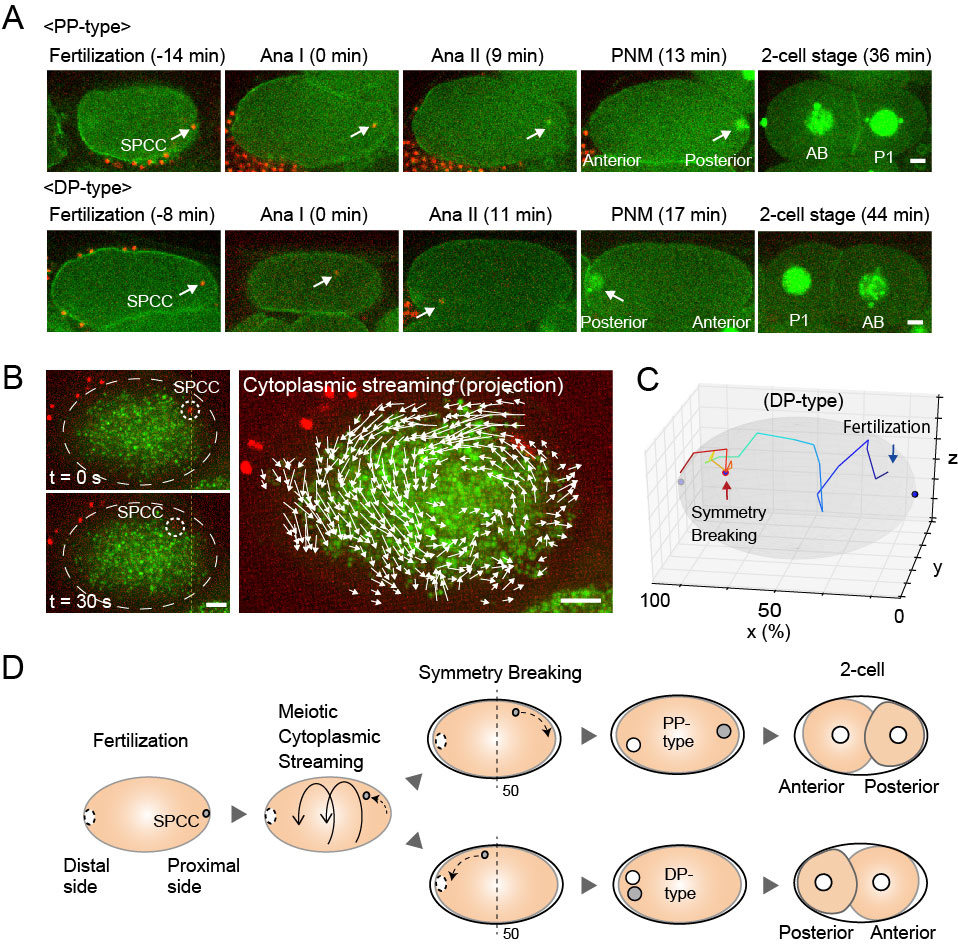Stochastic cytoplasmic streaming drifts the polarity cue in C. elegans zygotes.
Cytoplasmic streaming drifts the polarity cue and enables posteriorization of the Caenorhabditis elegans zygote at the side opposite of sperm entry
Kenji Kimura and Akatsuki Kimura
Molecular Biology of the Cell (2020) 31: 1765–1773 DOI:10.1091/mbc.E20-01-0058
*FOURTH SPECIAL ISSUE on FORCES ON AND WITHIN CELLS
Cell polarization is required to define body axes during development. The position of spatial cues for polarization is critical to direct the body axes. In Caenorhabditis elegans zygotes, the sperm-derived pronucleus/centrosome complex (SPCC) serves as the spatial cue to specify the anterior-posterior axis. Approximately 30 minutes after fertilization, the contractility of the cell cortex is relaxed near the SPCC, which is the earliest sign of polarization and called symmetry breaking (SB). It is unclear how the position of SPCC at SB is determined after fertilization. Here, we show that SPCC drifts dynamically through the cell-wide flow of the cytoplasm, called meiotic cytoplasmic streaming (Figures A and B). This flow occasionally brings SPCC to the opposite side of the sperm entry site before SB (Figure C). Our results demonstrate that cytoplasmic flow determines stochastically the position of the spatial cue of the body axis, even in an organism like C. elegans for which development is stereotyped (Figure D).

Figure: (A) Time series of the SPCC dynamics in C. elegans zygotes (white arrows). (B) SPCC movement (white dotted circle) correlates with the direction of cytoplasmic streaming (white arrows). (C) A trajectory of SPCC in DP-type. (D) Summary of the SPCC dynamics during cell polarization. Scale bars; 5 μm.















